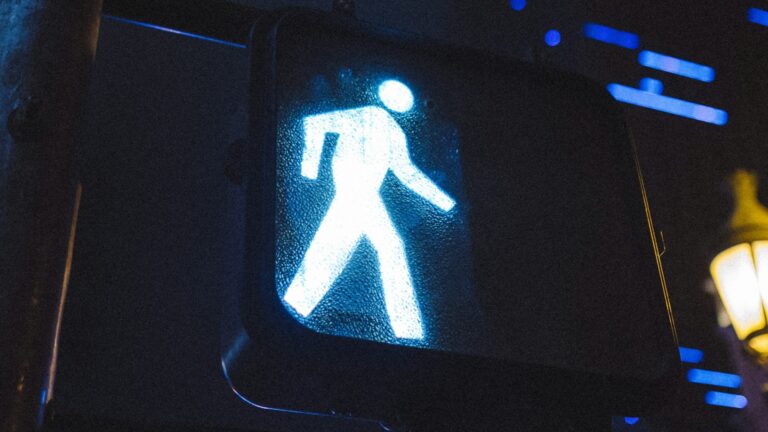Can You Get Compensation for Emotional Distress in Colorado Car Accidents?

Car accidents can be life-altering, causing not only physical injuries but also emotional and psychological challenges. In Colorado, seeking compensation for emotional distress after an accident is possible, but it involves a thorough understanding of how such claims work and what evidence is needed. This article explores the process, legal considerations, and practical steps to pursue compensation for emotional distress in Colorado car accidents.
Introduction: Understanding Emotional Distress Claims
When an accident occurs, the immediate focus is often on physical injuries and vehicle damage. However, emotional distress, including anxiety, depression, and post-traumatic stress disorder (PTSD), can significantly impact your quality of life. Whether an accident occurs in Commerce City or Aurora, recognizing and validating the psychological effects of a collision is an important part of your overall recovery and compensation.
What Is Emotional Distress?
1. Defining Emotional Distress
Emotional distress refers to the psychological impact that an accident has on an individual. This can include feelings of fear, anxiety, stress, or trauma that hinder daily functioning. Unlike physical injuries that may heal over time, emotional distress can have a prolonged and sometimes more profound effect.
2. Types of Emotional Distress
- Acute Stress: Short-term reactions to a traumatic event, which may last from a few days to weeks.
- Chronic Anxiety or PTSD: Long-term conditions that may require therapy or medication to manage.
- Depression: Persistent feelings of sadness or hopelessness that affect your ability to work or engage in daily activities.
Legal Requirements for Claiming Emotional Distress in Colorado
1. Establishing Negligence
To seek compensation for emotional distress, you must first establish that another party was at fault for the accident. Colorado’s comparative negligence law applies here, meaning that you can only pursue compensation if you are less than 50% at fault for the incident.
Example Scenario: A driver in Westminster is rear-ended by another vehicle. The driver, while physically unharmed, begins to experience anxiety every time they drive. If the other driver is found to be at fault, the Westminster driver may be eligible to file a claim for emotional distress.
2. Evidence of Emotional Distress
Proving emotional distress can be more challenging than demonstrating physical injuries. Essential forms of evidence include:
- Medical Records: Documentation from psychologists, therapists, or primary care physicians detailing your emotional state and any diagnoses.
- Testimonies: Statements from mental health professionals and people close to you (e.g., family, friends) who have observed changes in your behavior.
- Personal Records: Journals or logs that describe how the emotional distress has impacted your daily life, work, and relationships.
How to File a Claim for Emotional Distress
1. Contact an Experienced Attorney
Navigating the legal process for emotional distress claims can be complex. Consulting with an attorney familiar with Colorado’s personal injury laws, such as those at flanagan.law, ensures that you have the right support and guidance to build a strong case.
2. Document Your Experience
Begin documenting your emotional state as soon as possible after the accident. Include specific examples of how your life has been affected, such as missed workdays or changes in your ability to engage in hobbies or social activities.
3. Obtain Medical Treatment
Seeking help from a mental health professional is not only beneficial for your recovery but also supports your claim by providing concrete medical evidence. This can be especially impactful for drivers in Denver or Broomfield, where access to mental health resources is more readily available.
Factors That Influence Emotional Distress Compensation
1. Severity of the Accident
The more severe the accident, the easier it is to demonstrate a link between the event and resulting emotional distress. For instance, a significant multi-car pileup in Commerce City that causes widespread damage and involves emergency responders is more likely to lead to substantial claims than a minor fender-bender.
2. Physical Injuries
While emotional distress claims can stand alone, they are often easier to prove when accompanied by physical injuries. If you sustained both physical and emotional trauma, it strengthens the case for compensation.
3. Documentation and Professional Support
A well-documented case, supported by medical reports and expert testimonies, will carry more weight during negotiations with insurance companies or in court.
Example Case: Seeking Compensation for Emotional Distress
A resident of Aurora was involved in a severe car accident that left them physically uninjured but mentally scarred. Following the incident, they developed severe anxiety that prevented them from driving and caused insomnia. By working with a local attorney, collecting therapy records, and providing a comprehensive account of how their life was disrupted, the driver successfully secured compensation to cover therapy costs and lost income due to their inability to drive for work.
Conclusion: Protecting Your Rights and Well-Being
Pursuing compensation for emotional distress after a car accident is not just about seeking justice—it’s about ensuring your full recovery. Recognizing the importance of mental health and taking the steps to document your experience can make a substantial difference in achieving a fair outcome. If you or a loved one have experienced emotional distress following an accident in Colorado, consulting with an experienced attorney is a crucial step toward reclaiming your peace of mind.
FAQ
1. Can I seek compensation for emotional distress if I wasn’t physically injured?
Yes, you can. Although it is more challenging, it is possible to claim compensation for emotional distress without accompanying physical injuries if there is clear evidence.
2. What kind of evidence is needed to support my emotional distress claim?
Medical records, therapy notes, personal logs, and testimonies from witnesses or mental health professionals can all support your claim.
3. How does comparative negligence affect my emotional distress claim?
If you are found to be less than 50% at fault for the accident, you can still pursue compensation. Your compensation will be adjusted based on your percentage of fault.
4. How long do I have to file an emotional distress claim in Colorado?
Typically, you have two years from the date of the accident to file a personal injury claim. Consulting with an attorney can provide more specific guidance based on your situation.
5. Is emotional distress covered by car insurance?
Yes, emotional distress can be covered under the at-fault driver’s liability insurance, but you may need to provide substantial evidence to secure this type of compensation.






